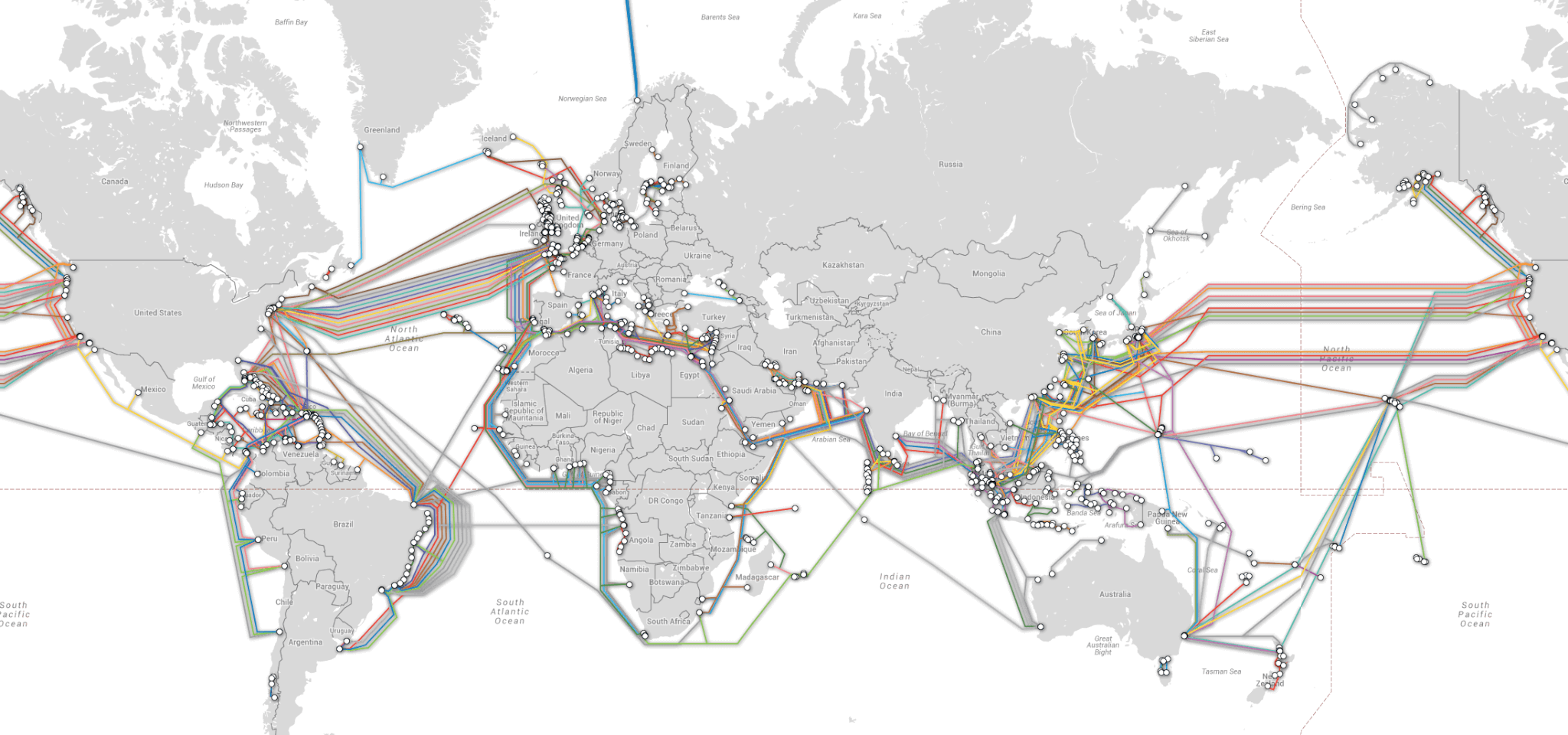Recientemente, las comunicaciones como el teléfono, la televisión y similares, se enviaron entre países y continentes a través de satélites. En la nueva era de Internet, los satélites también eran los conductos para todo tipo de comunicación. El resultado durante muchos años fue de alto costo y bajo ancho de banda. Los satélites todavía se utilizan para una variedad de comunicaciones y son vitales para conectar áreas remotas a servicios de Internet y otras formas de comunicación. Según algunas estimaciones, hoy día la gran mayoría (99%) de la comunicación se realiza a través de cable de fibra óptica. Dicho cable de FO tiene la capacidad de transportar más de 3 millones de llamadas de voz o noventa mil canales de televisión. Este tipo de transmisión de comunicación es eficiente y tan común que todos los continentes, excepto la Antártida, usan comunicación por fibra óptica. El cableado intercontinental no es nuevo, sin embargo, la introducción de cables submarinos ha aumentado la apuesta en la comunicación.
Cables submarinos
Los cables submarinos tienen un grosor de menos de 18 centímetros y se colocan en el fondo del océano utilizando embarcaciones submarinas especializadas. Estos cables deben instalarse con precisión para que la intensidad de la señal siga siendo óptima. El trabajo de mano de obra es intensivo y la inversión es de miles de millones de dólares.
Una breve reseña
La instalación de cables submarinos no es nueva, se introdujo por primera vez a mediados del siglo XIX. La comunicación telegráfica era el único jugador en las ciudades en ese entonces. Ahora, unos 150 años después, las técnicas de construcción e instalación no han cambiado mucho, sin embargo, la tecnología sí lo ha hecho. Las fibras ópticas han reemplazado los cables de cobre casi por completo.
Capacidad de transmisión de cables submarinos
Los cables submarinos pueden transmitir 40 gigabits de datos por hilo de fibra. Cada cable está formado por varios cables, lo que aumenta su capacidad de carga en los terabytes (un terabyte equivale a 1.000 gigabytes). Un complemento de los cables submarinos son los cables terrestres instalados en paralelo a carreteras y líneas de transmisión eléctrica, sean subterráneas o aéreas. Estos cables crean una red que conecta las ciudades con áreas rurales a través de cualquier territorio en donde el cable sea desplegado.
El futuro del cable submarino
Cada día que pasa, nuevos cables submarinos siguen siendo desplegados en todo el mundo. Uno de los más recientes proyectos bajo el mar conecta a Gran Bretaña con Japón por debajo del Océano Ártico. Este proyecto costó más de $ 3 mil millones. Sin embargo, el esfuerzo vale la pena el costo. Ahora que el cableado submarino está instalado, la comunicación entre Asia oriental y Europa es inmensamente rápida y fiel.
Asimismo en 2019 se dio a conocer públicamente que Google está llevando a cabo tres nuevos proyectos de cable submarino: Curie, Havfrue y HK-G (el sistema de cable de Hong Kong-Guam). Este último conectará el este de Asia con las islas del Pacífico y, finalmente, con Australia. Los dos primeros proyectos mencionados conectarán a Los Ángeles con la punta de América Latina y Estados Unidos con Dinamarca, respectivamente. Los proyectos irán en creciente aumento con la implementación de la gran inversión del gigante tecnológico.
Los cables submarinos han cambiado la comunicación del siglo XXI para mejor. Esta tecnología continúa mejorando y promete proporcionar a los clientes de teléfono, televisión e internet conectividad mundial más rápida, veraz y precisa a través de una vasta red de fibra óptica y los servicios de fibra óptica concomitantes.




